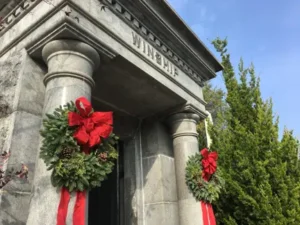By Stephanie L. Cherry-Farmer
It’s official: on June 25, after over four years of research, public meetings, survey, and documentation, the East Atlanta Historic District was listed in the National Register of Historic Places. The district includes residences, commercial buildings, and community landmarks such as churches and the former East Atlanta High School. The district is generally bounded by Interstate 20 to the north and east; Moreland Avenue to the west; and Edgemore Drive, Sargent Avenue, and Fayetteville Road to the south.
In 2016, the East Atlanta Community Association (EACA) approved the documentation of the East Atlanta area as part of a greater effort to examine formally nominating the neighborhood to the National Register of Historic Places. EACA, with the help of generous neighborhood donors, sponsored a class of students in Georgia State University’s heritage preservation graduate program who, along with neighborhood volunteers, worked during 2017 and early 2018 to research and write up the neighborhood’s history and development, and to survey, photograph, and map the almost 4,000 buildings that comprise the district.
The final product of their efforts was approved by Georgia’s state historic preservation office in August 2018, listing the district in the Georgia Register of Historic Places. The documentation was then forwarded to the National Park Service for review. Upon federal approval last month, the district was officially listed in the National Register of Historic Places.
The National Register of Historic Places is our country’s official list of historic buildings, structures, sites, objects, and districts worthy of preservation. Currently, more than 89,000 historic properties in Georgia are listed in the National Register. The National Register recognizes both individual properties and groups of properties that were related historically, which are listed as historic districts. The Zuber-Jarrell House on Flat Shoals Avenue, listed in the National Register in 1997, is East Atlanta’s only individually listed National Register property. National Register-listed historic districts in East Atlanta’s immediate vicinity include Reynoldstown, Kirkwood, and Candler Park.
Along with recognizing and honoring the neighborhood’s historic significance and documenting its development, listing East Atlanta as a historic district in the Georgia and National registers creates additional options and incentives for retention of the community’s historic character, without imposing any regulation on property treatment, transfer, or development, or restriction of property rights.
Properties listed in the National Register may qualify for specific benefits and incentives, including:
- State and federal investment tax credits
- State and federal preservation grants for planning and rehabilitation
- Eligibility to donate preservation easements to nonprofit organizations for a tax benefit
- County and local property tax abatements
Most of these benefits are predicated on rehabilitation of a listed property. For example, now that East Atlanta is listed in the state and national registers, any property owner who is interested in rehabilitating any contributing historic building in the neighborhood, including owner-occupied residences as well as rental, commercial, and community properties, can potentially qualify for state and/or federal tax credits equal to between 20% and 25% of rehabilitation costs. This credit allows the property owner to offset their cost of rehabilitation and thereby makes saving these historic properties more affordable.
Additionally, these projects can potentially qualify for county and City of Atlanta property tax assessment freezes. While these programs are all optional, property owners can also still demolish the buildings in question or change their properties in any way, subject to no additional regulations or restrictions that existed prior to the listing in the National registry. These tools, however, provide an additional opportunity and incentive for preservation.
East Atlanta is attracting a lot of attention of late, and the neighborhood’s historic character is one of its primary assets. Listing in the Georgia and National Registers of Historic Places provides expanded options for preservation and revitalization of that character so that it can continue to help East Atlanta attract the city’s best neighbors. So spread the word: East Atlanta is hip AND historic, and we now have new opportunities to stay that way.
For additional information on this project, the Georgia and national registers, and historic preservation tax incentives, please feel free to contact your neighbor Stephanie L. Cherry-Farmer at stephanie.cherry@gmail.com.
A huge “thank you” goes out to everyone who supported this effort, especially the East Atlanta Community Association and sponsors. This could not have happened without you. Congratulations, East Atlanta, on this historic honor.





Comments are closed.